Meibomian abscess, Internal hordeolum, Internal Sty
Contributor: William Charles Caccamise, Sr, MD, Retired Clinical Assistant Professor of Ophthalmology, University of Rochester School of Medicine and Dentistry
*Dr. Caccamise has very generously shared his images of patients taken while operating during the "eye season" in rural India as well as those from his private practice during the 1960's and 1970's. Many of his images are significant for their historical perspective and for techniques and conditions seen in settings in undeveloped areas.
Category: External Disease
Internal sty: also called abscess of meibomian gland or subacute meibomianitis (meibomitis)
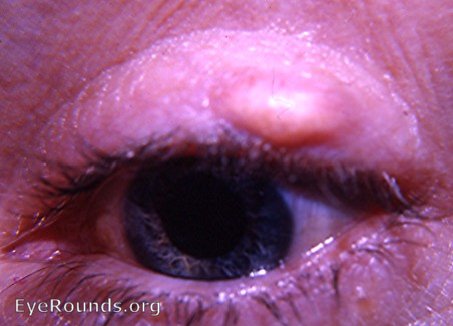
Since the lesion is pointing on the skin and the skin is very thin in this area, the surgical approach to this lesion can be through the skin. Unlike the tarsal conjunctival approach, the incision will be parallel to the lid margin, i.e. following the horizontal striations of the orbicularis muscle rather than the vertical striations of the meibomian glands.
Meibomian gland abscess / internal sty
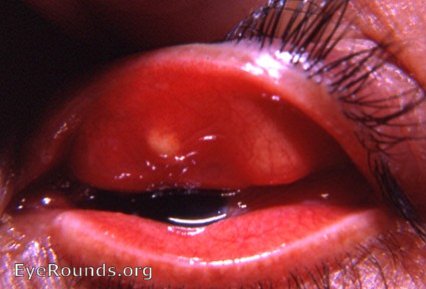
This is not a chalazion. It is an abscess of a meibomian gland
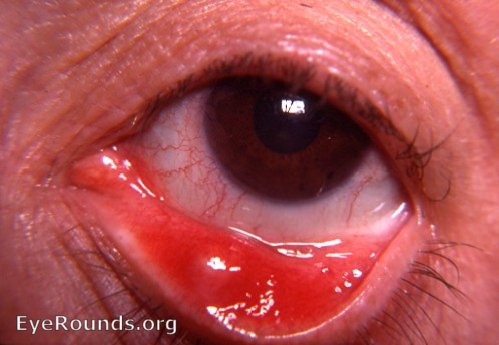
Internal hordeolum - a meibomian abscess
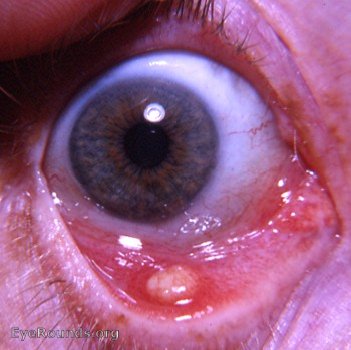
Here, the inflammatory reaction is subsiding. The abscess is ready to be treated surgically just as a chalazion would be approached surgically. The patient should be maintained on appropriate antibiotic therapy both systemically and topically both before and after surgery.
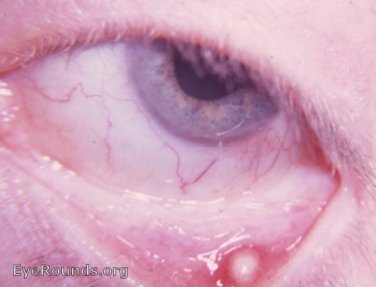
Incision of this lesion will release pus - not the typical contents of a chalazion.

Ophthalmic Atlas Images by EyeRounds.org, The University of Iowa are licensed under a Creative Commons Attribution-NonCommercial-NoDerivs 3.0 Unported License.


